Many businesses encounter the complexities of situations where they fail to manage the maintenance system in different industrial settings. Traditional tools for this job, such as paper logs, complex spreadsheets, etc., are no longer sufficient in a world where real-time data and mobile access have become the norm. That’s where a Computerized Maintenance Management System (CMMS) mobile app steps in, offering a smart, streamlined solution.
Major businesses across the globe are already experiencing the transformative benefits of CMMS mobile app development. These powerful tools enable the maintenance teams to access, update, and manage their tasks with unparalleled ease directly from their mobile devices. These apps redefine convenience and reshape how maintenance operations are conducted across industries.
By integrating a CMMS mobile app, technicians can instantly access everything from initiating work orders to updating equipment status, whether navigating the factory floor or working remotely in the field. This immediacy reduces response times while enhancing overall operational efficiency, significantly reducing downtime.
If you are a business looking to develop a CMMS mobile app, it is essential to understand that the entire implementation process involves careful planning. Key considerations include ensuring the app is user-friendly, integrates well with existing systems, and provides comprehensive functionalities like real-time notifications, detailed reports, and analytics. Investing in such technology further varies based on your operations’ specific needs and scope.
This blog will discuss the key features, benefits, development processes, and costs of effectively developing and deploying a CMMS mobile app. Our goal is to provide businesses like yours with comprehensive insights on maximizing the benefits of this technology to enhance your maintenance strategies.
What is a CMMS Mobile App? A Quick Insight Into the Technicalities
A Computerized Maintenance Management System (CMMS) mobile app is a software application designed to manage maintenance operations digitally and efficiently. A CMMS mobile app leverages technology to streamline every aspect of maintenance management. This includes scheduling, tracking, and analyzing maintenance activities.
Businesses worldwide are rapidly adopting CMMS mobile apps because they bring critical data into the hands of those who need it most: the maintenance teams. By providing real-time access to maintenance schedules, equipment specifications, and work order details, these apps help businesses minimize machine downtime and manage preventive maintenance more effectively.
The ability to make informed decisions on the fly significantly boosts operational efficiency and reduces unplanned downtime and costs associated with machine failures and repairs. In fact, 28% of maintenance professionals say reduced unplanned downtime is the biggest benefit of CMMS.
Computerized Maintenance Management System Market Size
According to the reports, the global computerized maintenance management system market size is expected to reach a valuation of $2.41 billion by 2030, witnessing a CAGR of 10.9% from 2023 to 2030.
The increase in the market share can be attributed to the rising adoption of digitalization in maintenance and operations management across various industries, including manufacturing, healthcare, and energy. This growth is also fueled by the need for organizations to increase efficiency and reduce operational costs through enhanced asset management and maintenance strategies. And surprisingly, CMMS now makes up 1/5th of the global asset management market.
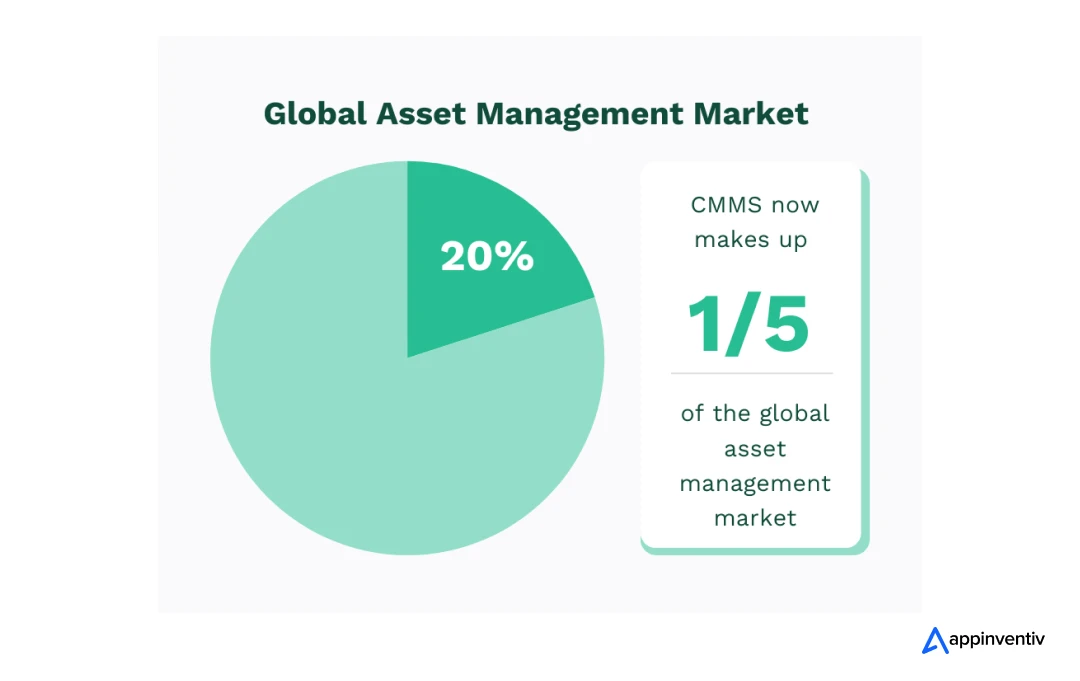
As businesses continually seek ways to streamline operations and maximize asset utilization, advanced technologies become crucial in evolving market demands. Leveraging technology supports their operational aspects while propelling innovation, enabling organizations to stay competitive in a fast-paced market.
Driving this market expansion is the integration of advanced technologies like artificial intelligence (AI), the Internet of Things (IoT), and machine learning (ML) within CMMS solutions. These integrations enhance the predictive maintenance capabilities of CMMS apps, enabling businesses to anticipate equipment failures before they occur and schedule maintenance activities proactively.
According to a McKinsey report, successfully integrating Computerized Maintenance Management Systems (CMMS) into digital maintenance strategies can transform asset management in heavy industries. These systems, coupled with digital work management and predictive maintenance, drive significant improvements in equipment reliability and maintenance efficiency.
The report also suggests that businesses employing these tools have reduced unplanned outages and enhanced maintenance labor productivity, thereby increasing profitability by 4% to 10%.
Given these compelling advantages, it’s clear why many businesses are eager to leverage CMMS mobile app development. Now, let’s delve into the benefits of a CMMS mobile app for your business.
Features of a Robust CMMS Mobile App
A robust CMMS mobile app is designed to streamline maintenance management in a user-friendly yet comprehensive manner. Let’s look at the basic and advanced features of a CMMS app that can significantly enhance your operational efficiency.
| Feature |
Functionality |
Strategic Benefit |
Operational Impact |
| Work Order Management |
Create, assign, and track maintenance work orders. |
Enhances task coordination and prioritization. |
Reduces downtime by ensuring timely repairs. |
| Asset Tracking |
Detailed logging of asset history and performance. |
Improves lifecycle management of assets. |
Facilitates proactive maintenance and replacements. |
| Inventory Control |
Monitors stock levels and automates reordering. |
Prevents overstocking and shortages. |
Lowers costs by optimizing inventory levels. |
| Scheduling |
Automated scheduling of preventive maintenance. |
Ensures consistent equipment care. |
Extends asset lifespan and prevents failures. |
| Mobile Access |
Remote access to CMMS features on mobile devices. |
Empowers field technicians with real-time data. |
Speeds up response times to maintenance issues. |
| Document Management |
Digitizes and manages maintenance documents. |
Centralizes access to critical information. |
Enhances knowledge sharing and compliance. |
| Real-Time Alerts |
Instant notifications about system issues. |
Keeps the team informed of urgent updates. |
Allows immediate response to critical issues. |
| Analytics and Reporting |
Generates performance and usage reports. |
Provides insights for strategic decisions. |
Improves efficiency through data-driven management. |
| GPS Integration |
Tracks location of assets and workforce. |
Secures assets and optimizes team deployment. |
Reduces time spent locating assets and personnel. |
| Compliance Management |
Ensures maintenance is in line with regulations. |
Mitigates risk of non-compliance penalties. |
Streamlines audit processes and safety checks. |
| Predictive Maintenance |
Uses data to predict equipment failures. |
Lowers the risk of unexpected breakdowns. |
Saves on costs by preventing costly downtimes. |
| Multilingual Support |
Offers multiple language options for diverse teams. |
Improves usability across global operations. |
Enhances communication and reduces errors. |
| Customization |
Allows modification to fit specific business needs. |
Aligns the tool with company processes. |
Ensures user adoption and maximizes utility. |
| Security Features |
Protects data with advanced security measures. |
Safeguard sensitive operational data. |
Ensures business continuity and trust. |
Use-Cases of CMMS Mobile App With Real-Life Examples
A CMMS mobile app can significantly enhance various aspects of maintenance management through its diverse applications. Here’s a closer look at how different features of a CMMS mobile app can be utilized across multiple maintenance aspects:
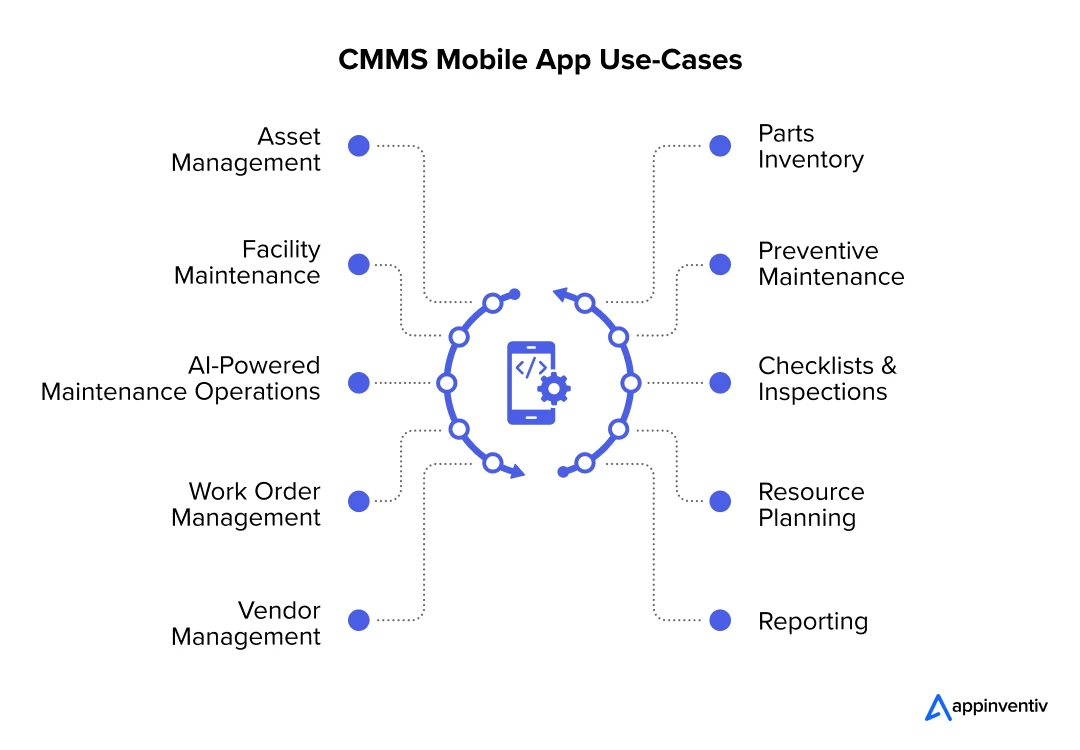
Asset Management
This involves managing and tracking the details and lifecycle of equipment. A CMMS app helps maintain accurate records of purchase dates, service histories, and performance metrics, aiding in timely decisions for maintenance or replacement to optimize asset utilization.
Real Example: San Diego
San Diego International Airport uses a CMMS system to manage over 11,000 assets efficiently. This software schedules, tracks, and maintains all assets, significantly lowering the risk of equipment failures and reducing downtime.
Parts Inventory
Efficient management of parts inventory ensures that the right amount of stock is available when needed. The CMMS app automates inventory levels, sends alerts for low stocks, and manages reordering processes, which prevents overstocking and shortages, saving costs.
Real Example: Toyota
Toyota utilizes a CMMS to handle its extensive parts inventory across its manufacturing plants. The system ensures that parts are readily available when needed, helping to minimize production delays and maintain optimal inventory levels.
Facility Maintenance
A CMMS app enables managers to schedule and track maintenance activities across different locations for large facilities with extensive maintenance needs. This ensures consistent upkeep and helps comply with safety and regulatory standards.
Real Example: McDonald’s
McDonald’s employs a CMMS to oversee facility maintenance across its global network of restaurants. This system streamlines the scheduling and management of maintenance tasks, ensuring all locations are well-maintained and meet regulatory standards.
Preventive Maintenance
Scheduled and routine checks prevent sudden equipment failures. The CMMS app helps schedule these maintenance activities, reducing the likelihood of expensive repairs and extending the life of the machinery.
Real Example: NASA
NASA uses CMMS for preventive maintenance of its diverse and specialized equipment. This proactive approach helps predict and prevent potential failures, ensuring the safety and reliability of its missions.
AI-Powered Maintenance Operations
Integrating AI into the CMMS enhances predictive maintenance capabilities. By analyzing data from the equipment, AI predicts potential issues before they cause failures, allowing for preemptive maintenance and scheduling based on actual equipment conditions.
Real Example: General Electric (GE)
GE enhances its maintenance operations by integrating AI with its CMMS at various power plants. AI-driven predictive analytics are used to foresee maintenance needs and fine-tune operational efficiency.
Checklists & Inspections
Maintaining standardized procedures during maintenance checks is crucial for accuracy and compliance. CMMS apps provide digital checklists and detailed inspection reports, ensuring every maintenance step is performed correctly and recorded.
Real Example: Hilton Hotels
Hilton Hotels implements a CMMS to conduct regular site checklists and inspections. This system ensures all hotel facilities uphold the highest guest satisfaction and safety standards.
Work Order Management
Handling work orders efficiently is vital for any maintenance operation. CMMS apps facilitate the creation, assignment, tracking, and completion of work orders, enhancing workflow coordination and timely resolution of issues.
Real Example: Siemens
Siemens uses a CMMS to enhance work order management within its engineering divisions. The system improves response times and boosts maintenance efficiency.
Resource Planning
This involves scheduling maintenance tasks based on available personnel and materials. The CMMS app provides tools for effective planning, ensuring resources are optimally used and reducing idle time.
Real Example: DHL
DHL uses a CMMS to plan and allocate resources across its centers effectively. This helps to ensure that the maintenance tasks are carried out efficiently without interfering with the ongoing logistics operations.
Vendor Management
Managing relationships and interactions with multiple vendors is streamlined with a CMMS app. It helps track vendor performance, manage contracts, and handle communications, simplifying vendor management processes.
Real Example: Ford Motors
Ford Motors uses a CMMS to manage its interactions with vendors and contractors. The firm employs the technology to ensure streamlined communications. In addition to this, it also helps them in managing contracts and evaluating vendor performance.
Reporting
CMMS apps automate the creation of detailed reports on maintenance activities, costs, and downtime. These reports offer valuable insights for strategic decision-making and future planning.
Real Example: PepsiCo
PepsiCo leverages a CMMS for detailed reporting on the maintenance of its manufacturing equipment. This reporting aids in making informed, data-driven decisions to enhance operational efficiency.
Step-by-Step Process to Create a CMMS Mobile App
Developing a CMMS mobile app can significantly boost your maintenance management capabilities. Let us look at the step-by-step process to build a computerized maintenance management app.
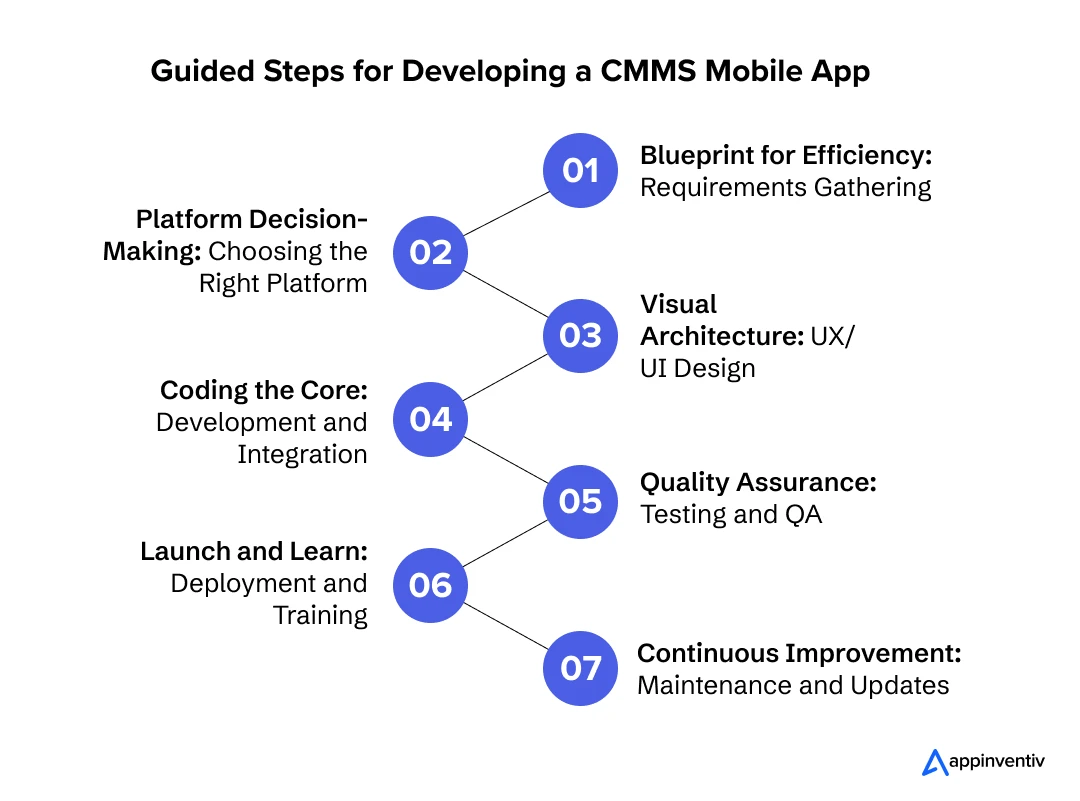
Step 1: Blueprint for Efficiency: Requirements Gathering
Begin by determining the essential requirements for your CMMS mobile app. Engage stakeholders from various departments, such as IT, maintenance, and operations, to gather insights on necessary features, usability expectations, and integration needs. This comprehensive input will guide the development to ensure the app addresses all critical operational requirements.
Step 2: Platform Decision-Making: Choosing the Right Platform
Decide which platforms (iOS, Android, or both) your app needs to support based on what devices your organization commonly uses. You must choose between developing a native app, which could offer a better user experience but at a higher cost, or a cross-platform app, which can be more cost-effective and quicker to deploy across various device types.
Step 3: Visual Architecture: UX/UI Design
Focus on creating an app design that is easy to use. An intuitive user interface will help ensure your maintenance staff can easily find their needs. Good design will facilitate user adoption and make the app a helpful tool in their daily work, improving overall efficiency.
Step 4: Coding the Core: Development and Integration
Now, initiate the process to build a computerized maintenance management app. This involves writing the code, setting up the backend databases, and integrating with existing systems like ERP software. It’s important to ensure the app works well with these systems to maintain data consistency and workflow across your organization.
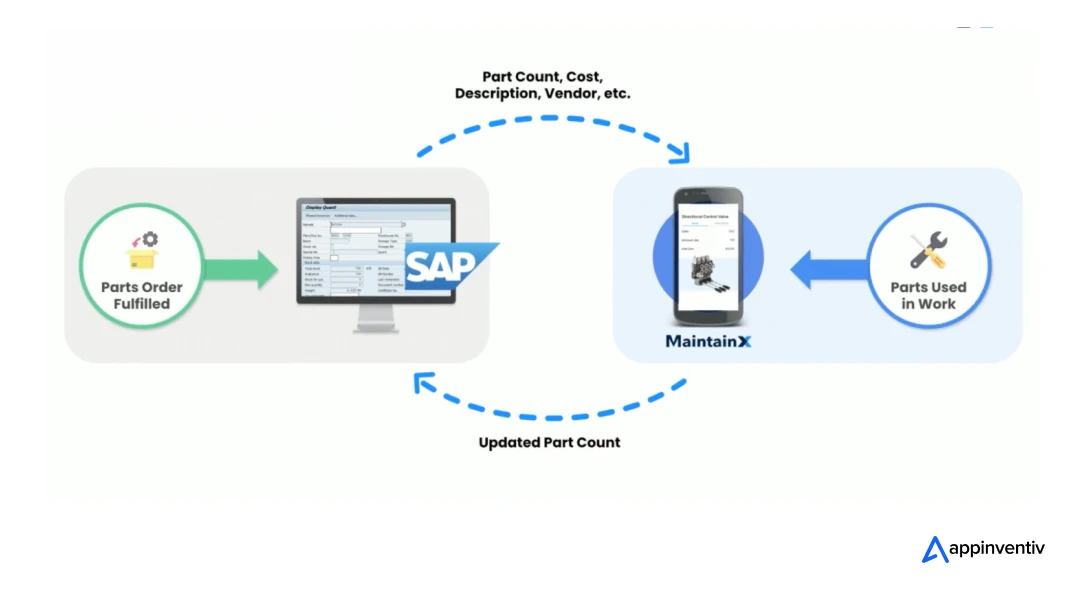
Step 5: Quality Assurance: Testing and QA
Thoroughly test the app to catch and fix any issues before it goes live. Testing is critical to ensure the app works as expected under all scenarios. This includes checking the app’s performance, functionality, handling security, and how well it works on different devices.
Step 6: Launch and Learn: Deployment and Training
During this phase of CMMS mobile app development, deploy the app across your organization and train your staff to use it. Effective training is key to helping your team understand how the app works and how it can make their jobs easier. This is also a good time to gather initial feedback to see if any immediate improvements are needed.
Step 7: Continuous Improvement: Maintenance and Updates
Keep an eye on how the app performs and listen to user feedback. Regular updates might be necessary to add new features, fix issues, or improve existing functionalities. Ongoing maintenance will ensure that the app remains useful and continues to meet your organization’s needs as it evolves.
Cost to Develop a CMMS Mobile App
The development cost of a CMMS mobile app can vary widely, typically ranging from $50,000 to $300,000.
This broad range is influenced by several factors, including the app’s complexity, the platforms it will be developed for, and the specific features required to meet your organization’s maintenance management needs.
It is vital to understand that complexity is the main driver of cost differences. Simple apps, with basic features and minimal customization, are at the lower end of the cost spectrum. In contrast, highly complex apps, which include advanced analytics, integration with existing systems, and custom-built features tailored to unique processes, can be significantly more expensive.
Here’s a breakdown of how costs can vary based on the complexity of the CMMS mobile app:
| Complexity Level |
Features Included |
Cost Range |
| Low |
Basic functionalities, limited integration |
$50,000 – $100,000 |
| Medium |
Advanced features, some custom integrations |
$100,000 – $200,000 |
| High |
Fully customized, extensive integrations |
$200,000 – $300,000 |
Factors Affecting the Cost of CMMS Mobile App Development
A wide range of factors can influence the cost of CMMS mobile app development, each adding its layer of complexity and cost implications. Understanding these elements is crucial for budgeting and planning the development process effectively. Let’s explore these factors in more detail to see how they contribute to the overall cost to develop a CMMS mobile app.
Platform Choice
The choice of platform (iOS, Android, or both) affects the development time and cost of custom CMMS software development. Building for multiple platforms generally increases costs, especially using native development approaches. Cross-platform solutions can reduce costs but might limit customization and performance.
Feature Complexity
The number and complexity of features significantly influence the CMMS mobile app development cost. Basic features like work order management and asset tracking are less costly to implement than more advanced features like real-time analytics, predictive maintenance capabilities, or integration with IoT devices.
Integration Needs
The extent of integration required with existing systems like ERP or real-time monitoring tools can also drive costs to build a computerized maintenance management app.. More integrations usually require more complex coding and more time for testing and debugging.
Here are some of the potential integrations for a CMMS mobile app and how each can benefit your organization:
| Integration Type |
How Does It Work? |
Benefits |
| ERP Systems |
Integrates with Enterprise Resource Planning systems to synchronize financial and operational data. |
Enhances decision-making with a unified view of financial and maintenance data, streamlining processes and improving efficiency. |
| IoT Devices |
Connects with Internet of Things devices for real-time data collection from equipment and sensors. |
Enables predictive maintenance by monitoring equipment conditions, reducing downtime, and extending asset life. |
| Inventory Management |
Links to inventory systems to track parts and supplies usage automatically. |
Ensures optimal inventory levels, reduces carrying costs, and prevents production delays due to out-of-stock items. |
| HR Management |
Integrates with Human Resources systems to manage staffing and scheduling based on workload and employee availability. |
Optimizes workforce allocation, improves labor productivity, and ensures compliance with labor regulations. |
| Quality Control Systems |
Coordinates with quality management tools to ensure maintenance tasks adhere to quality standards. |
Increases reliability and safety, reduces rework, and ensures products meet quality benchmarks. |
| Asset Management Systems |
Syncs with asset management software to provide comprehensive asset lifecycle insights. |
Improves asset utilization, enhances investment planning, and boosts overall asset performance. |
User Interface and Experience Design
The complexity and sophistication of the UI/UX design can significantly affect costs. A more intuitive and engaging interface requires more design and testing time, increasing overall costs.
Security Features
Adding advanced security features to protect sensitive maintenance data, especially for apps used in industries with strict regulatory requirements, can increase the development costs of CMMS Android app development. Implementing encryption technology, secure authentication, and data compliance measures requires specialized knowledge and additional testing.
Maintenance and Support
The cost of an app isn’t just about its initial development. Ongoing maintenance, updates, and support can also be significant, especially if the app uses cutting-edge technology or requires regular updates to comply with industry standards.
Customization Level
The extent to which the app needs to be customized to fit specific business processes or integrate with uncommon systems can raise the cost to develop a CMMS mobile app. Custom solutions are typically more expensive than off-the-shelf software because of the additional development and testing required.
Project Timeline
Faster development times can increase costs due to the need for more resources to work simultaneously. Extending the timeline can reduce immediate costs but might increase overall costs if the project scope expands.
Testing and Quality Assurance
Rigorous testing across different devices, operating systems, and user scenarios increases the project’s duration and the involvement of quality assurance professionals, impacting the overall budget for custom CMMS software development.
Benefits of Developing a CMMS Mobile App for Businesses
A CMMS mobile app can transform your maintenance team’s operations, making every task more efficient and effective. Here are the key CMMS mobile app development benefits:
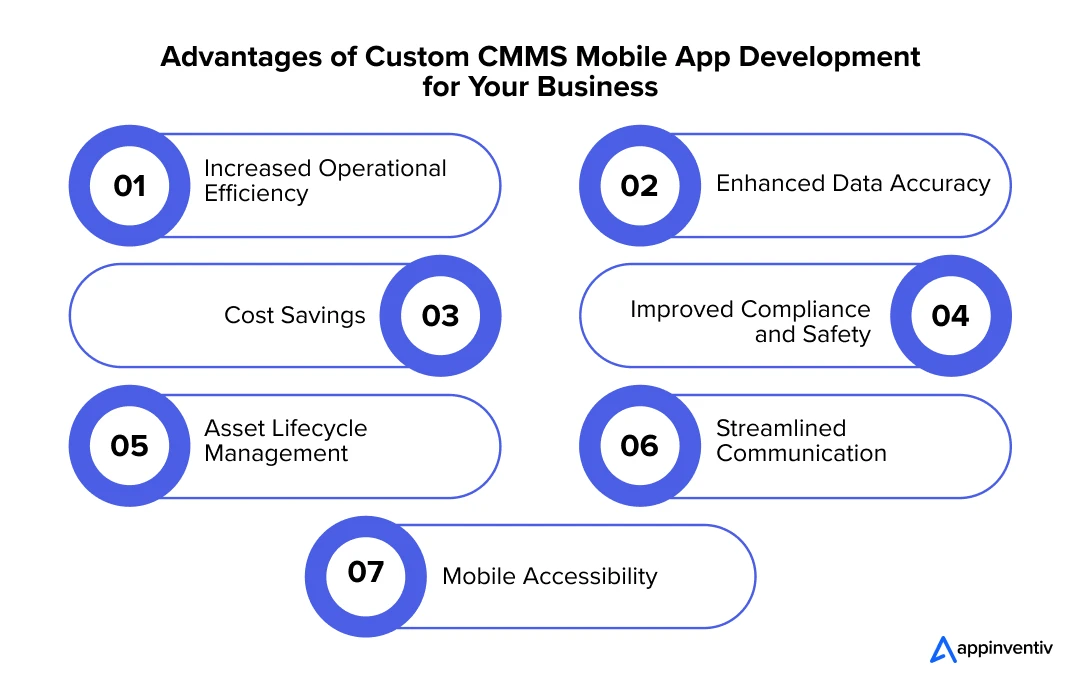
Increased Operational Efficiency
The app lets maintenance managers and technicians quickly respond to equipment issues and maintenance requests. With real-time updates and push notifications, the app ensures that all maintenance tasks are addressed promptly, reducing downtime and streamlining the workflow.
Enhanced Data Accuracy
Using a CMMS mobile app greatly reduces the risk of data entry errors common with manual systems. This is crucial because accurate data is vital for effective maintenance planning and resource management. The app helps maintain precise records of maintenance history, parts inventory, and other critical data, enhancing decision-making and strategic planning.
Cost Savings
CMMS mobile apps optimize maintenance schedules and decrease the need for costly emergency repairs. This helps minimize unplanned downtime, which can be expensive due to lost productivity and the urgent nature of repairs. Regular and proper maintenance facilitated by the app also extends the life of machinery, contributing to further cost reductions over time. Even though the cost to develop a CMMS mobile app can be significant, the long-term savings and ROI from enhanced maintenance operations usually outweigh the initial investment.
Improved Compliance and Safety
Ensuring that maintenance activities comply with industry standards and regulations is easier with a CMMS mobile app. The app facilitates tracking and recording all maintenance actions, simplifying compliance reporting and audits. This is essential for adhering to safety standards and avoiding potential fines.
Asset Lifecycle Management
By providing a comprehensive overview of each asset’s maintenance requirements and history, CMMS apps enhance asset lifecycle management. This allows organizations to maximize the usability and lifespan of their equipment, optimizing asset utilization and delaying new purchases.
Streamlined Communication
A CMMS mobile app centralizes maintenance data, which improves communication between team members and departments. This ensures that everyone involved is well-informed and can collaborate more effectively, making maintenance processes more efficient.
Mobile Accessibility
Technicians can access the system from anywhere, particularly useful for teams that manage large sites or multiple locations. This mobile accessibility increases the responsiveness and flexibility of the maintenance team, allowing them to address issues as soon as they arise, irrespective of their location.
If you are keen to tap into the advantages of CMMS mobile app development for your business mentioned above, it’s essential to explore the core features that make these benefits possible. Let’s look at the functionalities that can transform your maintenance management practices.
Challenges Associated with CMMS Mobile App Development
Developing a CMMS mobile app comes with a unique set of challenges that can impact the efficiency and effectiveness of the final product. Understanding these challenges and their solutions can significantly smooth the development process. Let’s explore some common challenges in CMMS app development.

Challenge: Integration Complexity
Integrating a CMMS app with existing systems like ERP can be complex and time-consuming.
Solution: Work closely with IT specialists to identify integration points early in the development phase and choose flexible platforms that easily adapt to existing systems.
Challenge: Data Security Concerns
Ensuring the security of sensitive maintenance data, especially in highly regulated industries, can be daunting.
Solution: Implement advanced security protocols and regularly update them to guard against evolving threats.
Challenge: User Adoption
Getting staff to adopt new technology can sometimes meet resistance, particularly if the benefits are not immediately apparent.
Solution: Provide comprehensive training sessions and create intuitive designs that mimic familiar user interfaces to enhance user-friendliness and acceptance.
Challenge: Maintaining Data Accuracy
Keeping data accurate and up-to-date in a CMMS app, where multiple users input information, can be challenging.
Solution: Automate data entry where possible using barcodes or RFID, and validate data through regular audits and checks to maintain its reliability.
Challenge: Scalability Issues
As businesses grow, a CMMS app needs to scale accordingly without performance lag or disruptions.
Solution: Design the app with scalability in mind, using cloud solutions that can expand resources as needed and ensure the app architecture supports easy updates and modifications.
Challenge: Cost Management
Balancing feature-rich solutions with budget constraints is always challenging during app development.
Solution: Prioritize essential features for the initial launch and plan phased updates for additional functionalities to manage costs effectively.

Future Trends Businesses Can Expect in CMMS Mobile Apps
As technology evolves, so do the capabilities and expectations of CMMS mobile apps. These trends are shaping the future of maintenance management, ensuring that businesses can anticipate changes and adapt effectively. Here’s a look at some emerging trends that will define the future of CMMS mobile app development:
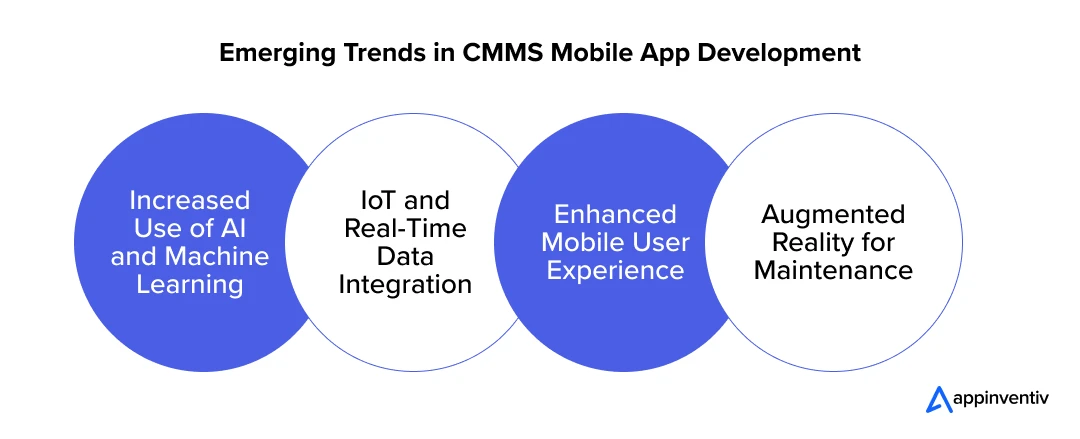
Increased Use of AI and Machine Learning
AI and machine learning are increasingly integrated into CMMS apps to enhance predictive maintenance capabilities. This allows for more accurate forecasts of equipment failures, optimizing maintenance schedules based on actual usage and condition rather than predetermined schedules. Here are a few areas where you can leverage AI for improved efficiency and cost savings:
| Focus Area |
Benefits of AI/ML Integration |
| Predictive Maintenance |
Proactive Fault Prediction – AI predicts equipment failures, enhancing maintenance scheduling and reducing downtime. |
| Asset Performance Optimization |
Optimal Asset Utilization – Machine learning optimizes equipment performance and maintenance, extending asset life and improving ROI. |
| Inventory Management |
Intelligent Inventory Optimization – AI forecasts inventory needs, minimizing costs and reducing waste. |
| Energy Consumption Analysis |
Efficient Energy Management – Machine learning identifies inefficiencies, optimizes energy usage, and supports sustainability. |
| Quality Assurance |
Enhanced Quality Control – AI monitors operations to maintain high quality and compliance, reducing defect rates and improving customer satisfaction. |
IoT and Real-Time Data Integration
Integrating IoT devices with CMMS apps enables real-time monitoring and data collection from equipment. This connectivity helps identify problems and swift resolution, drastically reducing downtime.
Enhanced Mobile User Experience
As remote work becomes more common, the demand for better mobile user experiences in CMMS apps is increasing. Future mobile CMMS app development process will likely focus on improving the interface and functionality to ensure that mobile apps are as comprehensive and easy to use as their desktop counterparts.
Augmented Reality for Maintenance
Augmented reality (AR) is starting to play a crucial role in maintenance management. By overlaying digital information onto the physical world, AR can help technicians perform maintenance tasks more effectively by providing step-by-step instructions and highlighting issues directly within their field.
Partnering with Appinventiv for Your CMMS Mobile App Development
We hope this blog has provided you with a comprehensive understanding of the complexities and benefits of CMMS mobile apps. To turn these insights into a functional, top-tier app, partnering with a seasoned mobile app development services provider like Appinventiv could be your next strategic move. Here’s why Appinventiv stands out as the ideal partner for developing your CMMS mobile app:
- Proven Expertise in Mobile Development: We have a proven track record of delivering high-quality mobile applications across various platforms. Our expertise ensures your CMMS app is robust, user-friendly, and tailored to meet industry-specific challenges.
- Proven Success: Our track record is reinforced by client testimonials highlighting our ability to deliver successful projects that significantly enhance business operations and drive technological advancement across various industries.
- Advanced Technology Incorporation: We stay at the forefront of technology by incorporating advanced features such as AI, IoT integration, and AR, enhancing the functionality and efficiency of your CMMS app.
- Agile Development Process: Our agile development methodology allows us to rapidly prototype, test, and iterate based on real user feedback. This process ensures that the final product is built to your specifications and adaptable to changing requirements, giving you a competitive edge in maintenance management.
- Expertise in Regulatory Compliance: Understanding the complexities of compliance, especially in industries like manufacturing and healthcare, is critical. Appinventiv has extensive experience navigating these waters, ensuring that your app adheres to all necessary legal and safety standards, reducing risk and liability.
- Custom Integration Capabilities: Our team specializes in creating custom integrations that ensure your CMMS app works seamlessly with your existing systems, whether ERP software, inventory management, or other operational technologies. This custom CMMS mobile app development approach fits perfectly into your tech ecosystem without disrupting existing workflows.
Contact us to partner with a developer who is deeply committed to innovation, quality, and customer satisfaction.
FAQs
Q. What is CMMS maintenance software?
A. CMMS maintenance software, or Computerized Maintenance Management System software or an app is a tool designed to help organizations manage their maintenance operations. It streamlines the scheduling, tracking, and implementation of maintenance activities, improving efficiency and reducing costs by automating processes and maintaining detailed records of equipment and asset maintenance history.
Q. How long does it take to make a CMMS mobile app?
A. The CMMS mobile app development timeline can vary significantly based on its complexity and scope. Typically, it can take anywhere from 3 to 9 months. More complex apps with extensive custom features and integrations might take longer to complete.
Q. What is the cost breakdown for CMMS app development?
A. The development cost of a CMMS mobile app typically ranges from $50,000 to $300,000. Factors influencing the price include the app’s complexity, whether it incorporates advanced technologies like AI and IoT, the choice of platform, and the extent of customization needed for integration with existing systems. Implementing stringent security measures to protect sensitive data can also elevate the overall investment. These factors collectively determine the financial budget required to build a robust and effective CMMS mobile app.
Q. Why should businesses adopt a CMMS mobile app for their maintenance needs?
A. Businesses should consider adopting a CMMS mobile app because it significantly streamlines maintenance management processes, leading to numerous operational benefits. These apps enhance efficiency by allowing real-time updates and access to maintenance data, enabling proactive scheduling of maintenance tasks that prevent unexpected equipment failures and costly downtime.
Additionally, other advantages of CMMS apps include extending the lifespan of assets by facilitating better tracking and regular maintenance practices. It also offers substantial cost savings by optimizing the use of resources and minimizing the need for emergency repairs. This streamlined approach saves money and improves overall productivity and asset management within a business.


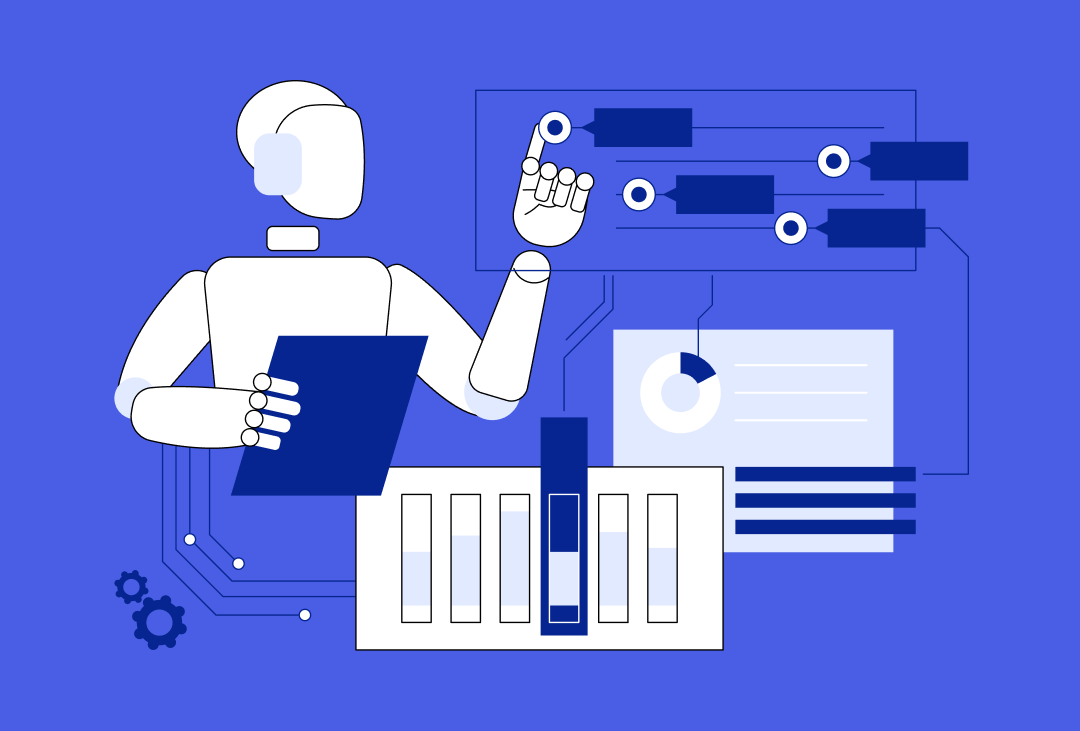
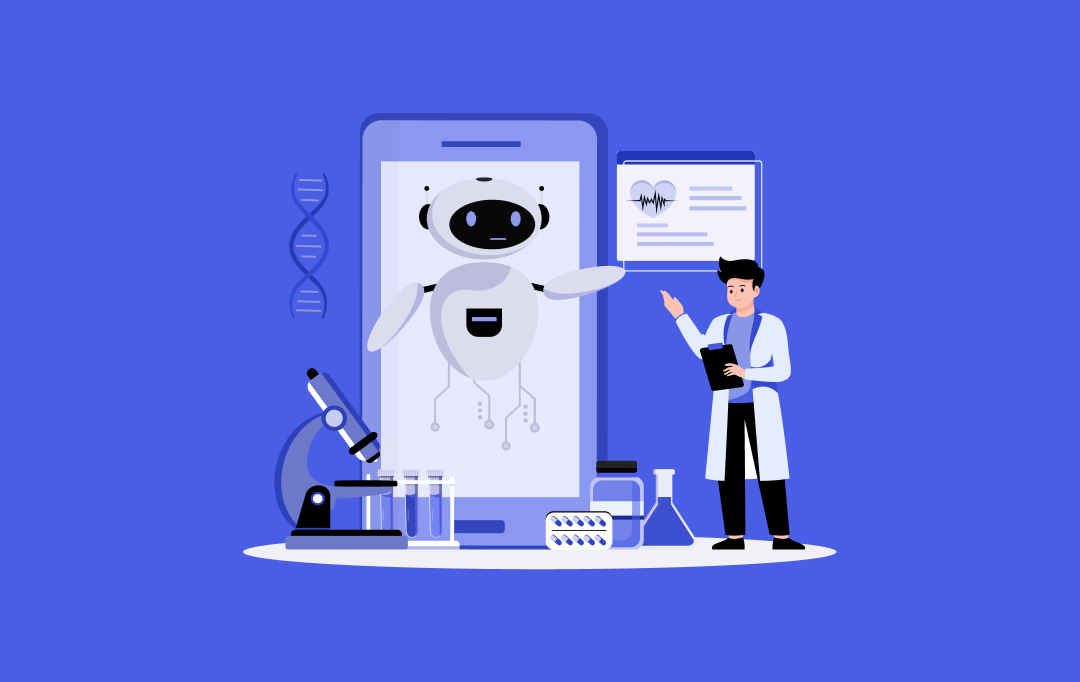


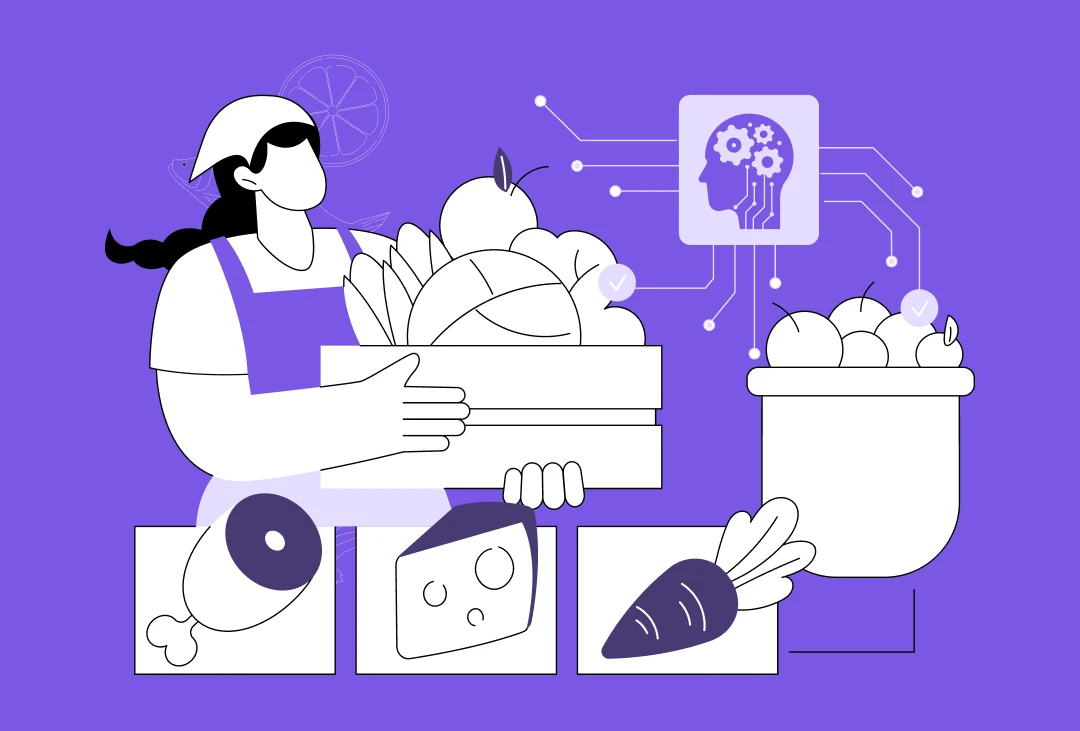
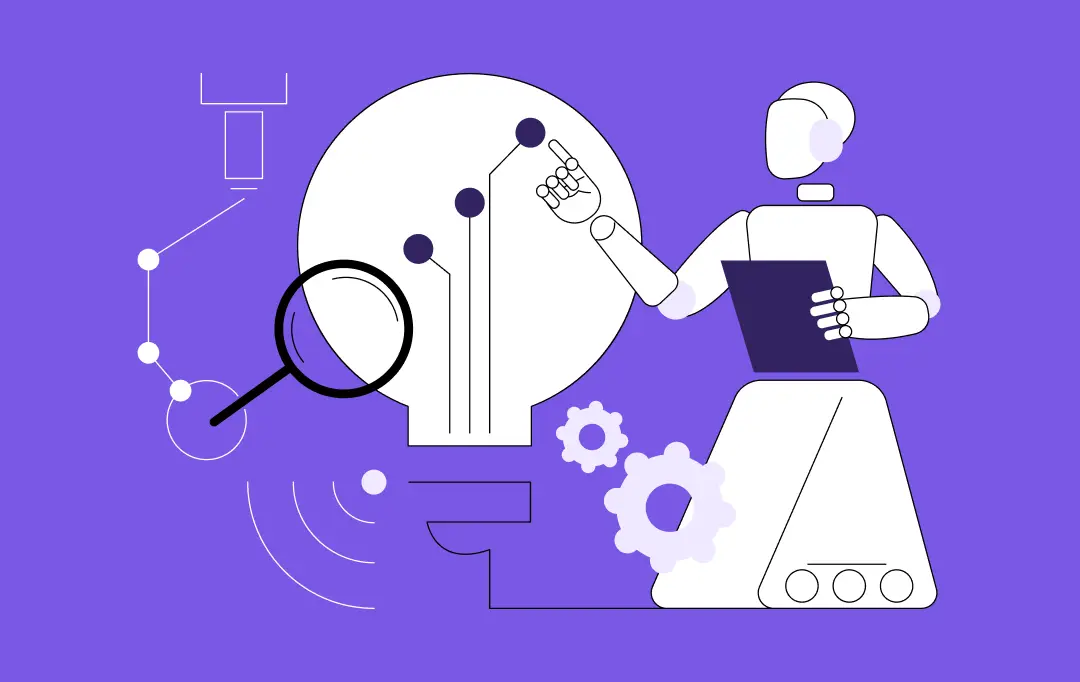

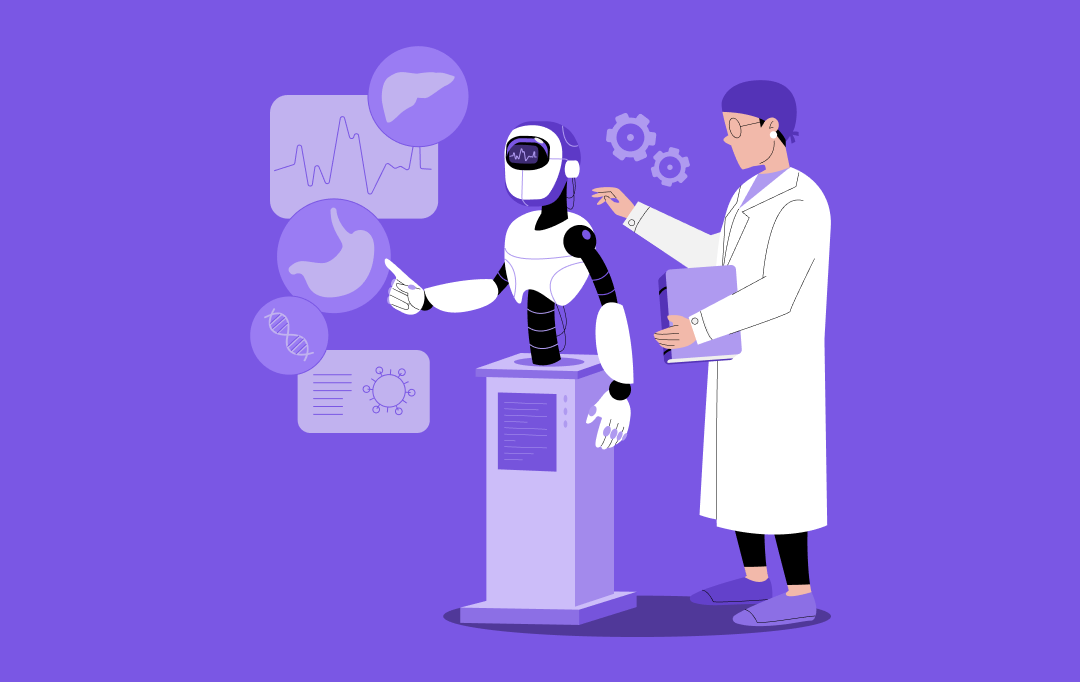


IT Managed & Outsourcing
Consulting Services
Data Services
Didn't find what you're looking for? Let us know your needs, and we'll tailor a solution just for you. RECOMMENDED BlogsView All BlogsRECOMMENDED guidesView All Guides
RECOMMENDED BlogsView All BlogsRECOMMENDED guidesView All Guides






























